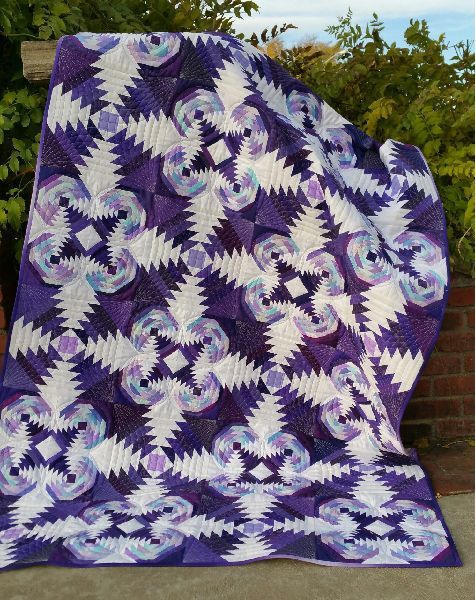Before you start your manual work, wash your fabric beforehand. Although not all do this, washing the fabrics prevents the design from deforming and staining when you wash it, as the excess paint leaves and the fabric shrinks in the wash.
Good quality fabrics do not shrink or paint, but it is best to prevent washing the fabric anyway.
Pass the fabric. To remove folds and make the cut easier, wipe the fabric with an iron. Use steam or a spray of water to keep the fabric from burning.
Do not pass the cotton batting, just the fabrics from outside the quilt. Take measurements. If you know the size you want for the quilt, measure the individual size of each piece to be sewn.
Remember the seam allowance; each side of the fabric will be sewn to another by a 0.6mm sheath. Thus, 1.2 cm are added to the length and width of each piece.
The size of the quilt and each piece is arbitrary, unless you are following a recipe. So, work with small or large parts depending on your experience.
If it helps, use a washable fabric pen to mark measurements on the fabrics before cutting them. Sewing chalk and 6B pencils are also good markers.
Cut the pieces. Focus on the front of the quilt for now; Cut out each of the pieces of fabric that you will sew together. Place each piece on its cutting base, and on top, the transparent ruler. Use the rotary cutter to cut the fabric by following the markings carefully and using the ruler to guide the cutter. Remember the old adage, “measure twice, cut one.”, So as not to make mistakes and lose tissue.
➡ A Tarted Up Pineapple by Janna L Thomas PDF
Plan the quilt. Spread the chunks on a wide surface, such as the floor, to mount the quilt visually the way you want it. Take the time to be satisfied with the arrangement of the pieces.
You may find it better to add different color pieces and prints. Replace fabrics that have already been cut by others with different patterns.
Keep the order of the fabric rows using post-its or chalk to mark each piece. Then download the pattern and make yours.

